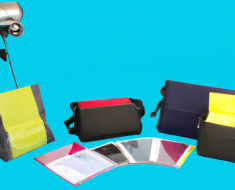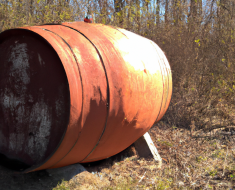“Suppressor Covers: Keeping your firearm cool and protected during intense shooting sessions.”
Pros and Cons of Using Suppressor Covers
Suppressor covers have become increasingly popular among gun owners in recent years. These covers are designed to provide a number of benefits, including heat mitigation, sound suppression, and protection for the suppressor itself. However, some shooters may wonder if these covers are really worth the investment. In this article, we will explore the pros and cons of using suppressor covers to help you decide if they are right for you.
One of the main benefits of using a suppressor cover is heat mitigation. When firing multiple rounds in quick succession, suppressors can become extremely hot to the touch. This not only poses a safety hazard but can also make it uncomfortable to handle your firearm. A suppressor cover helps to dissipate heat more effectively, making your shooting experience more comfortable and safe.
In addition to heat mitigation, suppressor covers can also help to reduce the sound signature of your firearm. While suppressors are already designed to muffle the sound of gunfire, adding a cover can further dampen noise levels. This can be particularly useful for hunters or competitive shooters who want to minimize their impact on nearby wildlife or competitors.
Another advantage of using a suppressor cover is that it can protect your suppressor from damage. Suppressors are an expensive investment, and any scratches or dings can diminish their performance over time. By using a cover, you can shield your suppressor from debris, moisture, and other elements that could potentially cause harm.
However, there are also some drawbacks to using suppressor covers that should be considered. One potential downside is that covers can add bulk and weight to your firearm. This may not be a significant issue for some shooters, but others may find it inconvenient or uncomfortable.
Additionally, suppressor covers can trap moisture against your suppressor, which could lead to corrosion over time. It is important to regularly remove and inspect your cover to ensure that no moisture has accumulated underneath.
Finally, some shooters may find that suppressor covers can affect the accuracy of their shots. The added weight and bulk of the cover could potentially throw off your aim, especially at longer distances. It is important to test your firearm with a cover attached to determine if it impacts your shooting performance.
In conclusion, suppressor covers offer a number of benefits for gun owners looking to enhance their shooting experience. From heat mitigation to sound suppression and protection for your suppressor, there are many reasons why you might consider investing in a cover for your firearm.
However, it is important to weigh these benefits against the potential drawbacks of using a suppressor cover. Consider factors such as added weight and bulk, moisture retention, and potential impact on accuracy before making a decision.
Ultimately, the choice to use a suppressor cover will depend on your individual shooting needs and preferences. If you value comfort, safety, and protection for your firearm, then a cover may be worth considering. Be sure to do thorough research and test different options before making a final decision on whether or not to invest in a suppressor cover for your firearm.
How Suppressor Covers Affect Heat Dissipation
Suppressor covers have become a popular accessory for firearms enthusiasts looking to reduce the heat generated by their suppressors during extended shooting sessions. But do these covers really help in dissipating heat, or are they just a gimmick? In this article, we will explore how suppressor covers affect heat dissipation and whether or not they are worth the investment.
When a suppressor is fired, it generates a significant amount of heat due to the rapid expansion of gases inside the device. This heat can quickly transfer to the outside of the suppressor, making it uncomfortable to handle and potentially causing damage to the surrounding environment. Suppressor covers are designed to mitigate this issue by providing an insulating layer between the suppressor and the shooter’s hand, reducing the amount of heat that is transferred.
One of the key ways in which suppressor covers help with heat dissipation is by trapping air between the cover and the suppressor. This air acts as an insulator, slowing down the transfer of heat from the suppressor to the cover and ultimately to the shooter’s hand. By keeping the suppressor cooler for longer periods of time, suppressor covers can help improve shooting comfort and prevent burns or other injuries.
In addition to insulating against heat transfer, suppressor covers can also help dissipate heat through convection. As air circulates around the cover, it carries away some of the heat that is generated by the suppressor, helping to keep it cooler overall. This process is particularly effective when shooting in windy conditions, as the moving air can quickly remove excess heat from the cover and suppressor.
Another way in which suppressor covers aid in heat dissipation is by protecting the suppressor itself from damage caused by excessive heat. High temperatures can cause metal components to warp or degrade over time, reducing the effectiveness and lifespan of the suppressor. By providing a buffer between the suppressor and external heat sources, suppressor covers can help extend the life of your equipment and save you money in the long run.
It is important to note that not all suppressor covers are created equal when it comes to heat dissipation. Some covers are made from materials that are better at conducting heat away from the suppressor, while others may actually trap heat and make the problem worse. When choosing a suppressor cover, be sure to look for one that is specifically designed for heat dissipation and has been tested for effectiveness in real-world shooting scenarios.
In conclusion, suppressor covers can indeed help with heat dissipation when used properly. By providing an insulating layer between the suppressor and shooter’s hand, trapping air for additional insulation, promoting convection cooling, and protecting against damage from excessive heat, these covers can make shooting more comfortable and extend the life of your equipment. If you frequently shoot with a suppressor or engage in long shooting sessions where heat buildup is a concern, investing in a high-quality suppressor cover may be a wise decision.
Impact of Suppressor Covers on Sound Reduction

Suppressor covers have become increasingly popular among firearm enthusiasts in recent years. These covers are designed to reduce the heat signature of suppressors and can also potentially help with sound reduction. But do suppressor covers really make a difference in reducing sound levels? Let’s explore the impact of suppressor covers on sound reduction.
When a suppressor is fired, hot gases are rapidly expelled from the muzzle, creating a loud noise. This noise is caused by the rapid expansion of these gases and the sonic boom that occurs as they exit the muzzle. Suppressor covers are designed to mitigate this noise by providing a barrier between the hot gases and the surrounding environment.
One of the main ways suppressor covers help with sound reduction is by absorbing some of the sound energy produced when a firearm is fired. The material used in these covers is typically heat-resistant and has acoustic properties that can help dampen the sound waves generated during firing.
In addition to absorbing sound energy, suppressor covers can also act as a baffle, redirecting and dispersing sound waves away from the shooter and surrounding area. By disrupting the path of these sound waves, suppressor covers can help reduce overall noise levels.
Another benefit of using a suppressor cover is its ability to reduce muzzle blast. Muzzle blast refers to the intense burst of hot gases that are expelled from the muzzle when a firearm is fired. This blast can contribute significantly to the overall noise level produced by a firearm.
By providing a barrier between the muzzle blast and the surrounding environment, suppressor covers can help dampen this noise and make shooting more comfortable for the shooter and those nearby. Additionally, some suppressor covers are designed with built-in muzzle brakes or flash hiders, which can further reduce noise levels and muzzle flash.
It’s important to note that while suppressor covers can help with sound reduction, they are not a magic solution for making firearms completely silent. Suppressors themselves are already highly effective at reducing noise levels, but adding a cover on top of them can provide an extra layer of protection against excessive noise.
In conclusion, suppressor covers can indeed help with sound reduction by absorbing sound energy, acting as baffles to redirect sound waves, and reducing muzzle blast. While they may not eliminate all noise produced by a firearm, they can certainly make shooting more comfortable for both the shooter and those nearby.
If you’re looking to further reduce noise levels when using a suppressor, investing in a quality suppressor cover may be worth considering. Not only can it help protect your suppressor from heat damage, but it can also enhance your shooting experience by making it quieter and more enjoyable.
Best Materials for Suppressor Covers
Suppressor covers have become increasingly popular among gun enthusiasts as a way to mitigate the heat generated by firing a weapon. These covers are designed to provide insulation and protection for the suppressor, helping to prevent burns and damage to surrounding gear or equipment. But do suppressor covers really help, and what are the best materials to look for when choosing one?
One of the primary benefits of using a suppressor cover is its ability to reduce heat mirage. When a suppressor heats up during firing, it can create a visual distortion known as heat mirage, which can make it difficult to see through a scope or aim accurately. By providing insulation around the suppressor, a cover can help to minimize heat mirage and improve shooting accuracy.
In addition to reducing heat mirage, suppressor covers also help to protect the user from burns. Suppressors can reach temperatures of over 1,000 degrees Fahrenheit during rapid firing, making them extremely hot to the touch. A cover acts as a barrier between the hot suppressor and the user’s hands, preventing burns and allowing for safer handling of the weapon.
When it comes to choosing the best material for a suppressor cover, there are several factors to consider. One of the most important considerations is heat resistance. The material used in the cover should be able to withstand high temperatures without melting or degrading, ensuring long-lasting performance and protection for the suppressor.
Silicone is a popular material for suppressor covers due to its high heat resistance and durability. Silicone covers can withstand temperatures of up to 600 degrees Fahrenheit, making them suitable for use with most firearms. Additionally, silicone is flexible and easy to install, allowing for a snug fit around the suppressor.
Another common material used in suppressor covers is Nomex, a flame-resistant fabric that can withstand temperatures of up to 700 degrees Fahrenheit. Nomex covers are lightweight and breathable, making them ideal for use in hot environments where heat dissipation is important.
Kevlar is another popular material for suppressor covers due to its exceptional strength and heat resistance. Kevlar covers can withstand temperatures of up to 800 degrees Fahrenheit, making them suitable for use with high-powered rifles and machine guns. Additionally, Kevlar is abrasion-resistant, providing added protection against wear and tear.
In conclusion, suppressor covers can be an effective tool for reducing heat mirage and protecting against burns when firing a weapon. When choosing a suppressor cover, it is important to consider factors such as heat resistance, durability, and ease of installation. Silicone, Nomex, and Kevlar are all excellent materials for suppressor covers, offering varying levels of heat resistance and protection. By selecting the right material for your specific needs, you can ensure that your suppressor remains safe and effective during use.
Do Suppressor Covers Extend the Life of Suppressors?
Suppressor covers have become increasingly popular among firearm enthusiasts in recent years. These heat-resistant sleeves are designed to fit over the suppressor of a firearm, providing insulation and protection from the intense heat generated during firing. But do suppressor covers really help extend the life of suppressors? Let’s take a closer look at the benefits and drawbacks of using suppressor covers.
One of the main advantages of using a suppressor cover is that it can significantly reduce the amount of heat radiating from the suppressor. This can help prevent burns or discomfort when handling the firearm after extended use. In addition, a suppressor cover can also help protect other accessories on the firearm, such as optics or handguards, from heat damage.
Another benefit of using a suppressor cover is that it can help reduce mirage effects caused by the heat radiating from the suppressor. Mirage can distort your view through optics, making it difficult to acquire targets accurately. By insulating the suppressor, a cover can help minimize mirage effects and improve overall shooting performance.
Furthermore, suppressor covers can also help reduce noise levels by dampening the sound of the suppressor when firing. This can be particularly useful for hunters or competitive shooters who want to maintain stealth and avoid disturbing wildlife or other shooters.
On the other hand, there are some drawbacks to using suppressor covers. One common concern is that a cover may trap moisture against the suppressor, leading to rust or corrosion over time. To mitigate this risk, it’s important to choose a high-quality, breathable cover that allows moisture to escape.
Additionally, some users have reported that suppressor covers can shift or slide during firing, potentially affecting accuracy or causing malfunctions. To prevent this issue, make sure to properly secure the cover on your suppressor and check it regularly for any signs of movement.
In terms of extending the life of your suppressor, a cover can provide some protection against wear and tear caused by heat and friction. However, it’s important to remember that regular maintenance and proper cleaning are essential for preserving the lifespan of your suppressor.
In conclusion, suppressor covers can offer several benefits for firearm owners, including heat insulation, mirage reduction, noise dampening, and accessory protection. While there are some potential drawbacks to consider, such as moisture retention and shifting covers, these issues can be mitigated with proper care and attention.
Ultimately, whether or not a suppressor cover helps extend the life of your suppressor will depend on how well you maintain and use your firearm. If you’re looking to enhance your shooting experience and protect your investment in firearms accessories, a high-quality suppressor cover may be worth considering.







